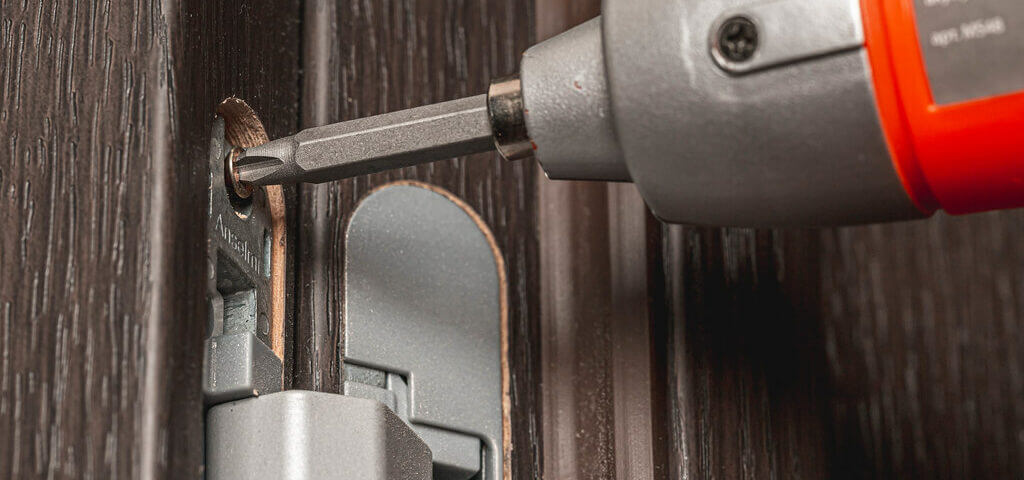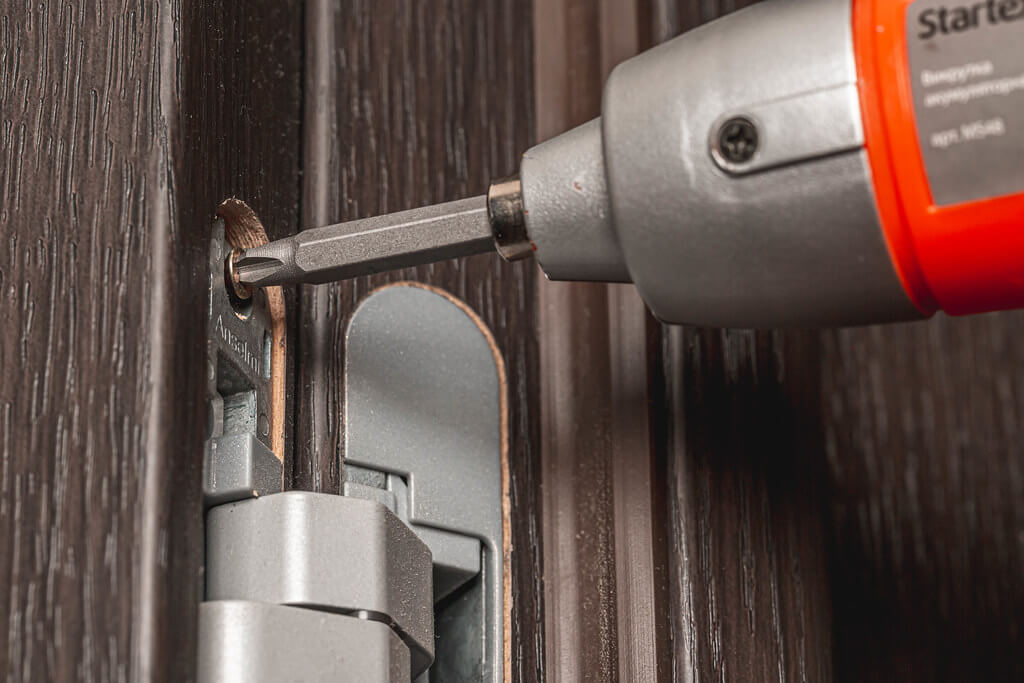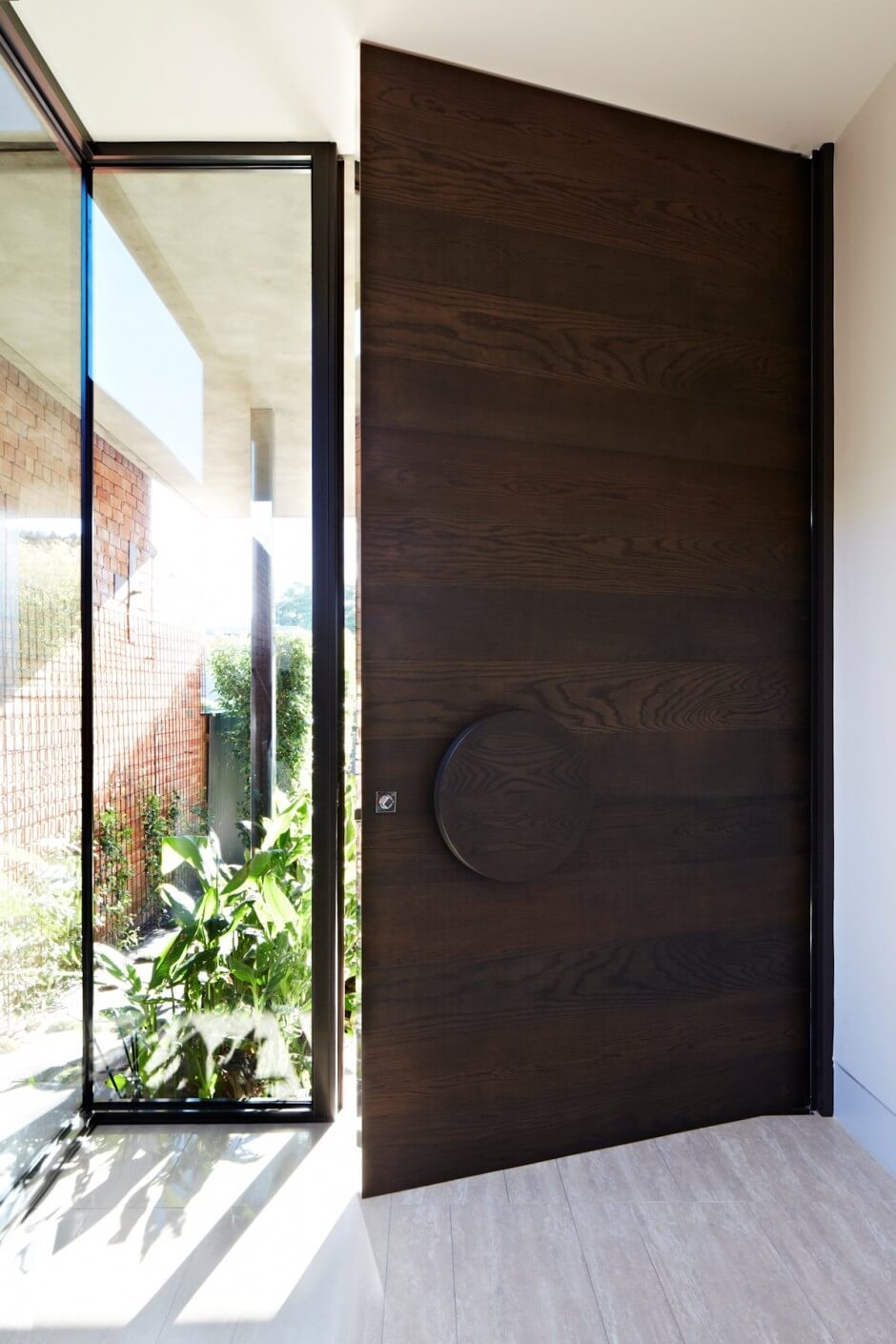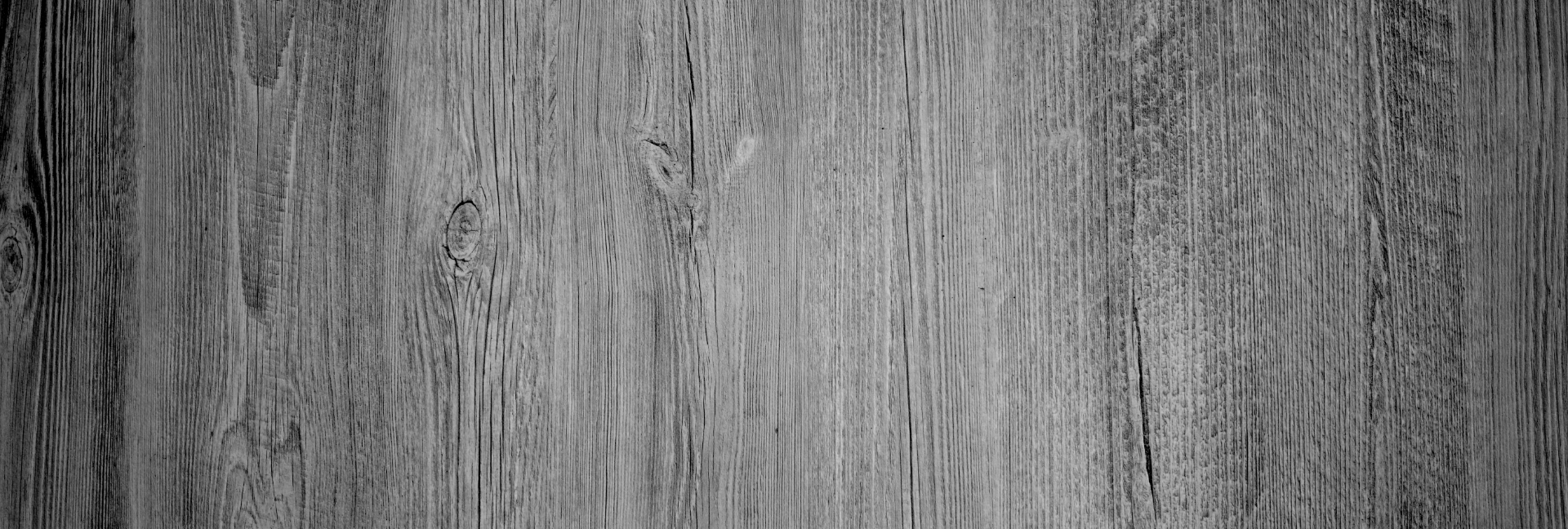


Both newly installed and veteran doors may experience various problems, ranging from a lack of lubrication to old and worn-out hinges. If you are wondering how to fix a crooked door or how to fix door alignment, we have got your back. Our guide to common door problems and solutions can help you solve any door-related issues you may be facing.
Hinges play a significant role in a door’s ability to open and close. Even though they do most of the work, hinge problems are fairly easy to repair.
Loose hinges are a common problem, naturally occurring over time due to consistent daily use. Most of the time, all you have to do is retighten the screws using a manual or electric screwdriver.

Squeaky hinges are also prevalent but easily remedied. Simply take some lithium grease, mineral oil or silicone spray and lubricate the entire hinge — including the hinge pins and tops of the pin slots — before wiping away any excess lubricant. If that does not fix it, or the hinge is too old and rusty, you likely need to replace the entire hinge.
It is worth noting that different lubrication options have different lifespans. Lithium grease will likely last the longest, followed by options like graphite and silicone spray. Mineral-based oils are a shorter-term solution, but you will find them in most home toolboxes.
We have all encountered a door that simply will not remain latched. Chances are, you used something heavy to keep the door shut or repeatedly tried to close it. Fortunately, it is a reasonably simple repair job — Just check how the door fits in the frame.
In severe cases, you may need to remove the strike plate and reinstall it to align with the door’s current position.
A drafty door is not just uncomfortable. It can also drastically affect your energy bills since you will use your heating and cooling system more often to help regulate the temperature indoors.
To fix a drafty door, figure out how the drafts are entering. Most commonly, this occurs because of worn-out weatherstripping or because your door is not closing flush against the frame. In some cases, it may not be the door’s fault. Sometimes, time and the elements wear away the plaster around a part of the doorframe, leaving a small gap where drafts can come through. If you encounter this problem, simply fill the gap with a powdered filler or insulation foam.
If the door itself is drafty, replacing or adding new weatherstripping will typically prevent air from entering or escaping. If not, replace the door.

The causes of sticky doors may be as simple as a dirty hinge or as complicated as a foundation issue. Generally, the cause is one of three things:
The solutions to all three problems are simple. Start by tightening and cleaning the hinges. If issue one is the problem, this fix should clear it right up.
If either of the other issues is the problem, you need to find the problem area by looking for signs of wear on the edge of the door. Look for worn paint or finish from when the door rubs against the frame. Use a sander or plane — either electrical or manual will work — to thin out the problem area of the door. Do this in stages to prevent removing too much of the door.
Plane or sand, test the door and then repeat as needed. Once the door works as expected, repaint or reseal the area you have worked on.
If a door’s bottom wall plates are misaligned, you will have a very hard time getting the door flush against the doorstop. To fix this, try moving the parts of the door jambs — either the hinge side or the latch side — into the same plane.
Another method of troubleshooting this issue is to tap the top of the jamb using a block and hammer to move the top part of the door once you have screwed the latch side brackets into the wall.
How do you fix a door that is not closing flush at the top? Sometimes, if the door is not installed on a level surface, one side of the door could end up higher than the other at the top. Another cause could be that the door hinge side is out of plumb.
First, to fix an uneven door, try checking to see if the door is out of plumb by using a level. If the issue is caused by an uneven floor, you will most likely need to trim down either the latch side or the hinge side of the door. You can figure out how much of the door side you need to cut down by measuring the gap on the low part of the floor.
If your door trim is not fitting correctly, you will have to inspect various parts ranging from the hinges to the casing, to see where the problem is. If necessary, you can also use a miter saw to cut it. Depending on its installation, you might need to slightly bevel it back as well to fit it into place.
In some cases, you may be able to make the necessary adjustments by sanding or planing the affected area rather than making larger cuts.
Over time, a door can begin to warp when exposed to moisture or when it does not fit into its jamb. To identify this scenario, check to see if the unit is out of plumb with the wall. You want to ensure that it follows the same plane as the hinge side on the door.
If the door has become damaged and warped due to moisture, it is best to replace it.
A door that closes on its own can be frustrating to deal with. Most of the time, this happens because the door is out of plumb and is closing because of its own weight.
To keep it from doing that, you will need to add some resistance in the door’s hinges by hammering down on the top hinge pin and creating a bend in it. You can also add a spring hinge and adjust it to prevent the door from shutting.
We at Manhattan Door have over 80 years of industry experience and understand what it takes to exceed our customers’ performance, design and security expectations for commercial doors. To learn more or start designing custom commercial wood doors using our superior craftsmanship techniques, contact our team today.
